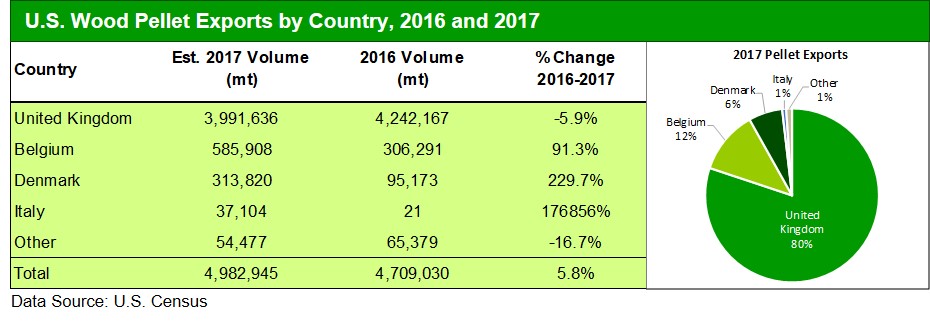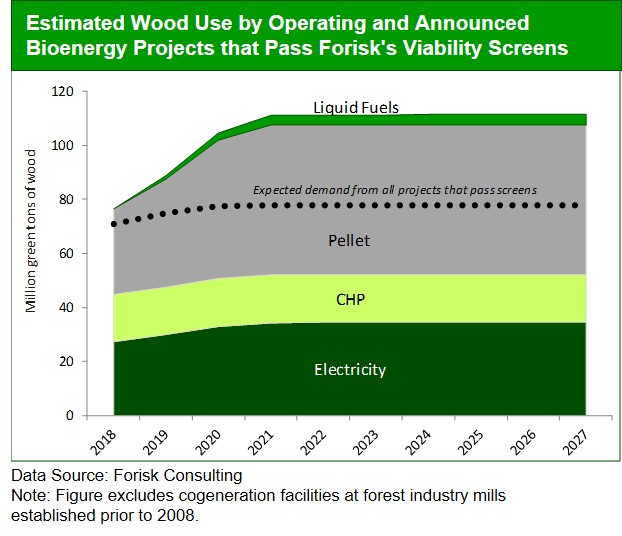This post includes an excerpt from the bioenergy research, authored by Andrew Copley and Amanda Lang, published in the Q1 2018 Forisk Research Quarterly (FRQ) Publication.
Canadian wood pellet capacity is expected to increase 18% in 2018.
Canadian wood pellet capacity was 3.5 million metric tons in 2017. Capacity is expected to increase to 4.1 million metric tons in 2018. This 18% increase is mainly attributable to the anticipated completion of Pinnacle’s 475 thousand metric ton Entwistle facility in Alberta and the 125 thousand metric ton Smithers mill in British Columbia. Great Northern Timber’s purchase and restart of Scotia Atlantic Biomass, a 120 thousand metric ton facility in Ontario, also contributes to this expected increase in capacity.

U.S. wood pellet exports increased 7% year-over-year through November 2017.
Increases in exports to Belgium and Denmark off-set declines to the UK, which were down 5% year-over-year. The UK remained the largest importer of U.S. wood pellets, however, with 3.7 million metric tons imported through November 2017. Belgium import volumes of U.S. wood pellets increased 89% year-over-year. Denmark remained the third largest importer of U.S. wood pellets in 2017, with more than a threefold increase from 2016; 56% of U.S. wood pellet export volume to Denmark took place between September and November. Italy became a top-five importer in 2017, based on a 16 thousand metric ton shipment in July and 17 thousand metric ton shipment in October. The U.S. is on pace to export 5.0 million metric tons in 2017, representing a 6% increase over 2016 volumes.

Forisk analysis suggests wood use for viable bioenergy projects in the U.S. will be 78 million tons per year by 2027.
As of January 2018, Forisk’s wood bioenergy database tracks 441 operating and announced projects, down from 442 projects in October 2017. These projects represent potential wood use of 111.7 million tons per year by 2027. Based on Forisk’s analysis, 294 projects pass basic viability screening, indicating potential wood use of 77.8 million tons per year, up 0.7% from the October 2017 estimate. The figure below details the estimated wood use associated with bioenergy by project type in the United States through 2027. The dotted line, which indicates the “estimated demand from all projects that pass screens,” reflects the application of Forisk’s screening process.

To download the most recent Wood Bioenergy Summary, click here.

Leave a Reply